What's New
Displaying results 3661 - 3670 of 4922
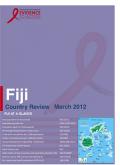
Resource | Reviews and Snapshots,
Fiji is classified as a low HIV prevalence country. The first cases of HIV were identified in 1989, and a cumulative 366 confirmed HIV cases were reported as of December 2010. The main reported mode of transmission was heterosexual (89%), followed by perinatal transmission (6%) and homosexual transmission (3%).
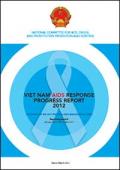
Resource | Publications,
In June 2011, Viet Nam participated in the UN General Assembly High-Level Meeting on AIDS in New York. At this meeting, Viet Nam renewed its commitment to the HIV response and adopted new targets by signing the 2011 Political Declaration on HIV/AIDS: Intensifying our Efforts to Eliminate HIV/AIDS. This report also reflects a national consensus on key achievements and challenges in the HIV response in Viet Nam in the years 2010 and 2011.
Viet Nam has also finalized its new National Strategy on HIV/AIDS Prevention and Control to 2020, with a vision to 2030, developed with broad consultation. The targets of the new National Strategy echo those of the 2011 Political Declaration, and illustrate Viet Nam’s commitment to the vision of zero new infections, zero discrimination and zero AIDS-related deaths.

Resource | Publications,
A review of the implementation of the NHSP 2007–2011 was conducted in 2011. An important finding from discussions with a number of partners was that, few, if any of the organisations involved in the HIV response used the NHSP to guide their work. The civil society organisations were usually working in their area of expertise, e.g., counselling or peer education for young people. If their work happened to overlap with an aspect of the NHSP, that was fine. Secondly there was no coordination or monitoring of the work being done by civil society sector and no effort to relate it to what is expressed in the NHSP.
A new National Strategic Plan was developed in 2011 for the period 2012-2015, informed by the findings from the review of the 2007–2011 NHSP. This NSP will put into practice the intentions of the HIV/AIDS Decree. This will ensure that the whole population is aware of the importance of responding to the HIV epidemic, and of doing so in ways that adhere to the human rights and governance framework outlined in the Decree.
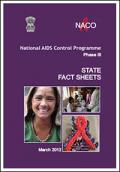
Resource | Fact Sheets,
The adult HIV prevalence at national level has continued its steady decline from 0.41% in 2000 through 0.36% in 2006 to 0.31% in 2009. All the six high prevalence states show declining trend. However, the low prevalence states of Assam, Chandigarh, Orissa, Kerala, Jharkhand, Uttarakhand, Jammu & Kashmir, Arunachal Pradesh and Meghalaya show rising trends in the last four years.
New HIV infections has declined by more than 50% over the past decade from 2.7 lakh in 2000 to 1.2 lakh in 2009. Of these, six high prevalence states account for only 39%, while the states of Orissa, Bihar, West Bengal, Uttar Pradesh, Rajasthan, Madhya Pradesh and Gujarat together account for 41% of new infections.
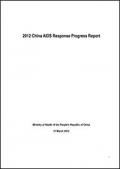
Resource | Publications,
In accordance with the requirements set out in the 2012 Global AIDS Progress Report Preparation Guidelines (hereafter referred to as the Guidelines), the Ministry of Health assumed responsibility for organization and preparation of the China 2012 AIDS Response Progress Report (hereafter referred to as the Progress Report), as well as mobilization and coordination of participation of various stakeholders. Representatives from relevant government departments, civil society organizations (CSOs) and people living with HIV (PLHIV) actively participated in the report preparation.
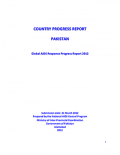
Resource | Publications,
The Global AIDS Response Progress Report (GARPR) reporting period from January 2010 to December 2011 has been prepared through consolidation and analysis of recent Second Generation Surveillance (SGS) data, service utilization reports. In the present report, 17 out of 30 indicators have been validated that comprehensively describe various facets of the epidemic in Pakistan as well as progress of the national response to date. The remaining indicators have not been reported on either due to non-relevance or non-availability of data.

Resource | Publications,
The reporting process has been led by the National AIDS Programme of the Ministry of Health. Data on coverage data and financial resources were collected directly from implementing partners. These data are part of the annual data collection for the Progress Report of the implementation of the NSP. UNAIDS, UNICEF and WHO assisted in populating the indicators with the latest available information.

Resource | Publications,
The 2012 Country Progress Report for the Republic of Vanuatu on Global AIDS Response Progress (GARP) covers the period January 2010 to December 2011. It is the third time Vanuatu has submitted a Country Progress Report.
This Country Report was prepared in a participatory manner and engaged a range of stakeholders, including government agencies, civil society, development partners and people living with HIV. Stakeholders attended meetings, filled in the National Commitments and Policy Instrument (NCPI) and attended a data validation workshop in Port Villa on 21 March 2012.

Resource | Publications,
The preparation of the 2010-2011 Global AIDS Progress Report involved consultation with HIV stakeholders in country, including government officials, bi-laterals, civil society and faith based organizations and United Nations Agencies. Interviews were held with key government and civil society partners and a consensus building process was ensured. This process has enabled stakeholders to take stock of the current HIV situation as well as provide guidance on future programme needs.

Resource | Publications,
This report provides the most current available information on the HIV/AIDS epidemic and response in Solomon Islands for the years 2010 and 2011, with the aim of tracking the country’s progress towards achievement of the 2011 Political Declaration on HIV/AIDS.
The report was prepared by the Government of the Solomon Islands led by the Ministry of Health and Medical Services HIV/AIDS Unit and the Solomon Islands National AIDS Council (SINAC). Clinical and policy staff of the HIV/STI Unit, government and civil society stakeholders, faith based organisations, people living with HIV, and multilateral and bilateral development partners contributed at various stages of the preparation process, particularly during data collection, report development and review.





